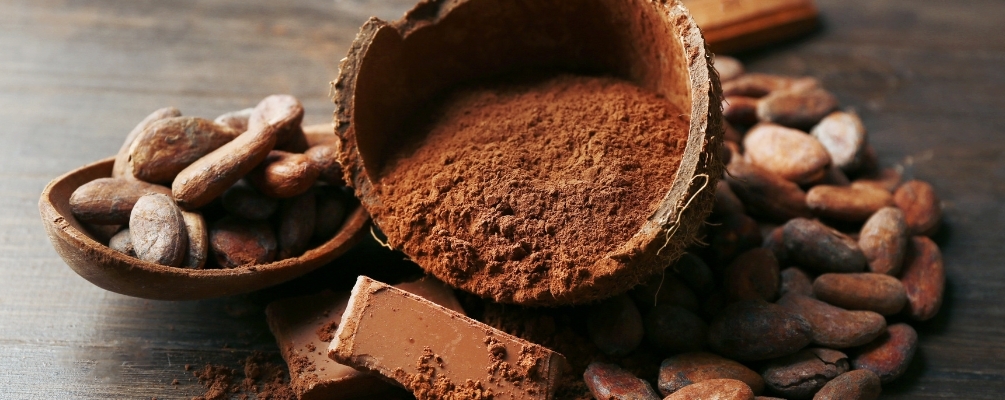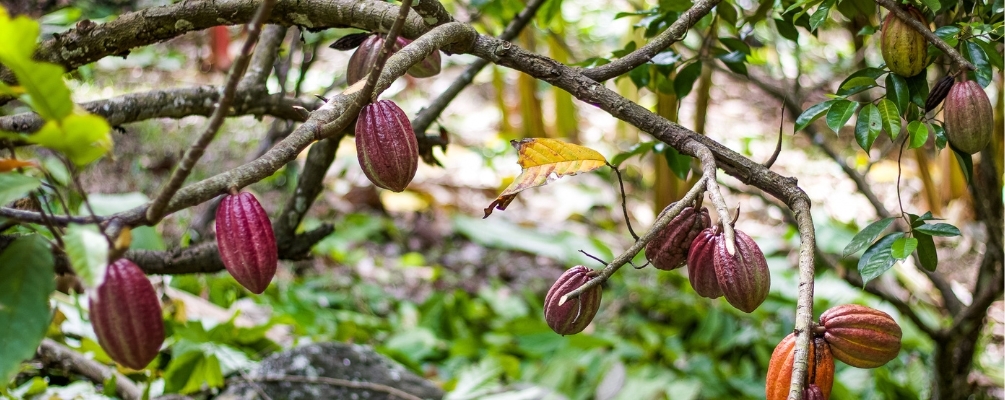Cacao and cocoa products have long been celebrated for their deep, rich flavour and impressive health benefits. However, in recent years, concerns have arisen about the presence of heavy metals such as cadmium and lead in these beloved foods. As a brand committed to transparency and quality, we want to shed light on this issue, explaining how these metals end up in the supply chain, the risks they pose and how we ensure our products meet the highest safety standards.
HOW DO HEAVY METALS GET INTO CACAO?

Heavy metals occur naturally in the environment and can enter the supply chain through several pathways:
- Soil Contamination – Cacao trees absorb heavy metals from the soil, which can be naturally high in minerals like cadmium due to geographic or environmental reasons.
- Airborne Deposition – Industrial pollution, mining, and fossil fuel combustion release heavy metals into the air, which then settle onto crops and soil.
- Processing & Handling – Contamination can occur during post-harvest handling, drying, or storage, particularly with lead, which may be introduced through dust or contact with contaminated surfaces.
WHY IS THIS AN ISSUE NOW?

Recently, global cacao shortages have made it more difficult and expensive to source high-quality beans. Several factors contribute to this issue:
- Limited Sourcing Options – With supply shortages, buyers have fewer choices, meaning they may have to source from regions or suppliers where soil contamination is naturally higher or where farming practices are less controlled.
- Changing Supply Chains – Due to disruptions in traditional cacao-producing regions (e.g. West Africa), buyers may be forced to look elsewhere, such as Latin America, where cadmium levels in soil are naturally higher.
- Lack of Stricter Controls in Some Regions – High-demand markets may accept cacao from sources that previously would not have met strict heavy metal regulations, simply to keep up with demand.
- Increased Testing & Awareness – It is also possible that the issue was present before, but more rigorous testing and tighter regulations are now highlighting the problem more than before.
COMMON HEAVY METALS FOUND IN CACAO & COCOA
CADMIUM
Cadmium is primarily found in the soil and absorbed by cacao plants through their roots. It accumulates in the beans and can be present in significant amounts, especially in cacao grown in certain regions of Latin America.
Potential Health Effects: Most people are exposed to only small amounts of cadmium through food. However, long-term, high-level exposure may affect kidney function, cardiovascular health and bone health.
Regulatory agencies set strict limits to keep cadmium levels in food well below those associated with health concerns and regular testing helps ensure consumer safety.
LEAD
Unlike cadmium, lead contamination often happens after harvesting, mainly through environmental exposure or improper handling during drying and storage.
Potential Health Effects: Lead is a neurotoxin that can impact brain development, particularly in children. Exposure over time can contribute to cognitive and behavioural issues.
Food safety authorities monitor and regulate lead levels in foods to help protect public health.
TESTING AND ACCEPTED LIMITS FOR HEAVY METALS IN FOOD PRODUCTS IN AUSTRALIA
Australia has established maximum specific limits for heavy metals in food products to ensure consumer safety. These are set out in the Australia New Zealand Food Standards Code (FSANZ) – Schedule 19 – Maximum levels of contaminants and natural toxicants. [1]
This standard helps regulate the levels of cadmium permissible in cacao products sold within the country. In Australia, for cadmium in chocolate products, the maximum allowable limit is 0.5 mg/kg. [1]
Currently, Australia does not have specific maximum allowable limits for lead, arsenic, or mercury exclusively for cocoa or chocolate products. However, these heavy metals are regulated in other food categories under the Australian Food Standards Code, and food businesses are required to ensure all products meet general safety requirements. The maximum allowable limits vary depending on the food in question and the range can be found in FSANZ – Schedule 19.
[1] FSANZ Schedule 19. Maximum levels of contaminants and natural toxicants
OUR COMMITMENT TO SAFETY & QUALITY

At Honest to Goodness, we take food safety seriously and we have strict quality control measures, including:
- Sourcing from Trusted Suppliers: We work with cacao growers and suppliers who prioritise sustainable practices and soil health to minimise contamination risks.
- Regular Testing: We conduct routine heavy metal testing on our raw cacao and finished cocoa products to ensure they meet or exceed regulatory standards.
- Cadmium levels are tested on each batch of raw cacao/cocoa prior to shipment. The levels of cadmium of each specific batch are reported on the certificate of analysis that can be provided to our manufacturing customers.
- Other heavy metals including lead, arsenic and mercury testing is done routinely based on our internal risk assessment to ensure that safe levels are not exceeded.
While the presence of heavy metals in cacao is a valid concern, responsible sourcing, rigorous testing and transparent communication can help ensure safe consumption.
Discover More About Organic Cacao & Cocoa Products
At Honest to Goodness, we’re proud to offer a wide range of high-quality cacao and cocoa products - including organic cacao powder, organic cocoa powder, chocolate products, organic cacao nibs, and organic cacao butter wafers - all rigorously tested for safety and quality. Whether you’re baking with dark cocoa or curious about the difference between cacao vs cocoa, understanding how food regulations play a role is key. That’s why we follow strict guidelines to ensure every product meets the highest standards. If you're looking to learn more about cacao or cocoa in Australia, the Australia New Zealand Food Standards Code, or our testing processes, we’re always happy to share what goes into making our products both safe and delicious.



![Introducing Sprout Organic [Supplier Spotlight] Introducing Sprout Organic [Supplier Spotlight]](https://cdn11.bigcommerce.com/s-dis4vxtxtc/images/stencil/160w/uploaded_images/sprout-blog-thumbnail.jpg)

![Introducing Sunraysia [Supplier Spotlight] Introducing Sunraysia [Supplier Spotlight]](https://cdn11.bigcommerce.com/s-dis4vxtxtc/images/stencil/160w/uploaded_images/sunrayasia-thumb1.jpg)
![Introducing Little Harvesters [Supplier Spotlight] Introducing Little Harvesters [Supplier Spotlight]](https://cdn11.bigcommerce.com/s-dis4vxtxtc/images/stencil/160w/uploaded_images/lh-blog-thumbnail.jpg)